
How do I go faster on a bike? An age-old question ever since the creation of our beloved two-wheeled companion. Moving from a ‘push bike’ to a crank and chain, and then on to gears was a dramatic technological shift. Nowadays, such fundamental mechanical overhauls are more limited. Yet riders are forever seeking simple solutions to their velocity woes. Unfortunately, the most effective, healthiest and cost-efficient option stares us all in the face.
Get fitter, eat better, drink fewer beers. Fitness goes up, weight goes down, power: weight gets better. Simple really. Put any one of the Pro Tour riders on a heavy road bike from Gumtree, they’d most likely still dominate your Sunday club run. But we can’t all be tour riders toeing the ambiguous and murky dividing line between right and wrong.
Second best, throw money at a problem. If you’re going to do this, you might as well make sure you’re getting the best value in terms of time saved vs cost. Below we’ve listed several drag-reducing options and what they cost. For this we’ve re-used the study conducted by Aero Sports Research in 2010. They used the constant comparison of a rider able to do a 40km time trial in 48 minutes (towards the top end of the UK time trial circuit). It goes without saying that the various items tested in 2010 will have evolved and improved since then. But the principle remains.
Below is a summary table of the drag-reducing options tested with each one explored in more detail below:

In David Millar’s excellent autobiography, he discusses his constant struggle to find a speed suit that was up to scratch, his team often ignoring his requests. Nowadays, you can buy them very easily and relatively cheaply from a range of suppliers. If you haven’t first attempted option 1 of get fit and lose some fat, this particular garment may not be your most flattering look. But you may be able to overlook that in light of the near 2 minute saving donning this elastic playsuit gives you. Admittedly this particular test used the Nike Swift Suit which you can’t actually buy. However, we feel options such as this would give you a similar effect whilst bombing along a damp A-road early on a Sunday morning.
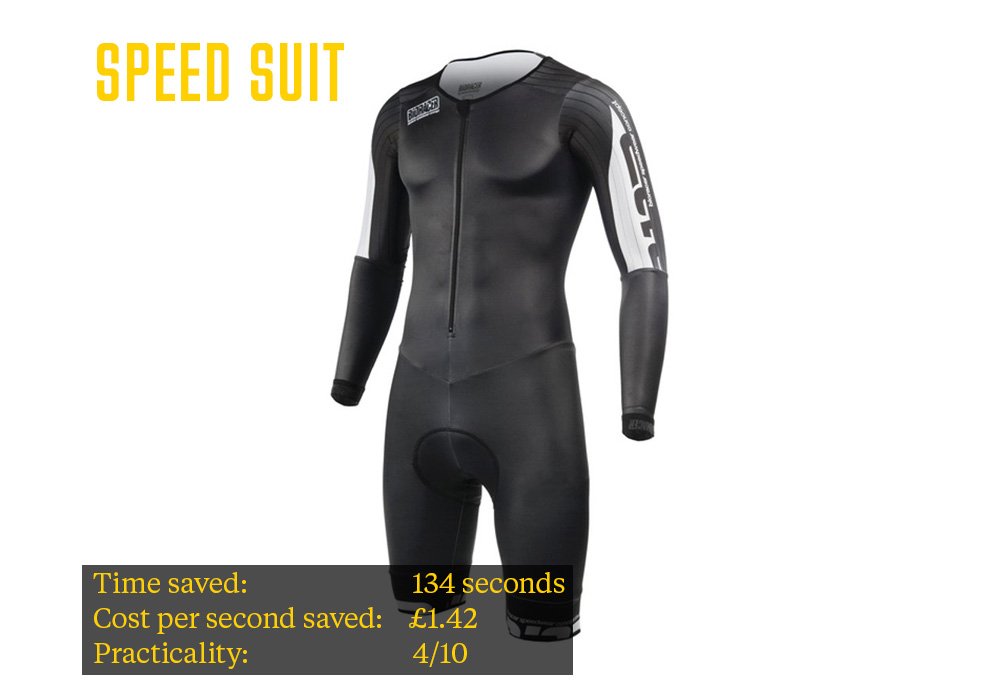
The must-have for any entry-level triathlete or time-trialist. A simple clip on pair of forward pointing arm rests converts any rider from a moving wall to a marginally more aerodynamic moving wall. For as a little as £40-50 you can purchase some very comfortable and lightweight options such as these. You’ll need to tweak your saddle height and position to compensate for this change. Try moving it up and forward, allowing your shoulders to be above the elbows and hips almost above the front cogs.
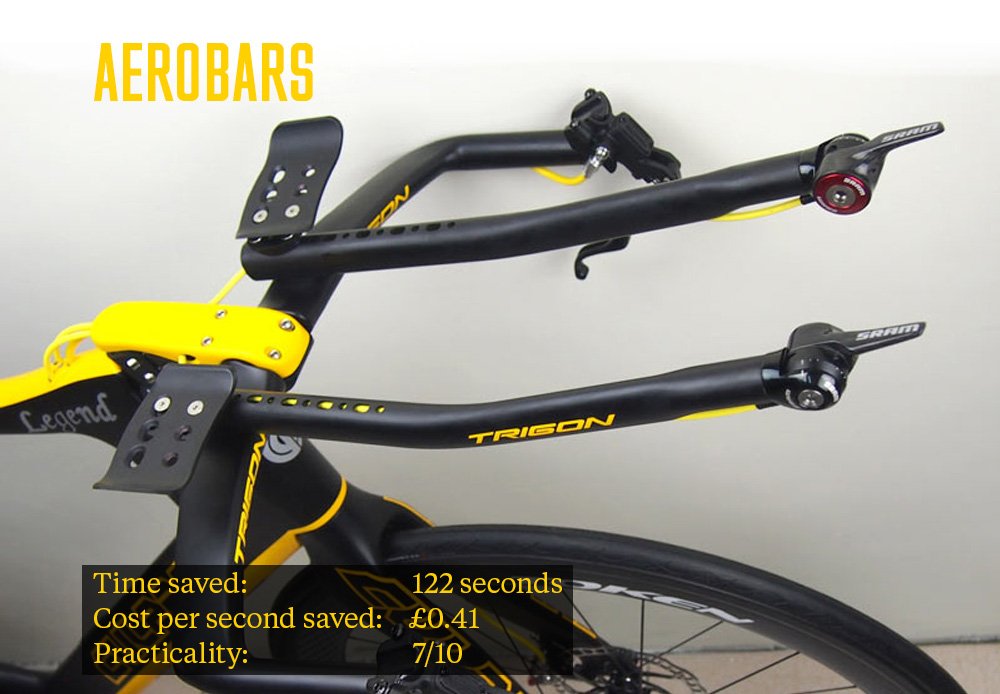
Helmets: the most divisive item of clothing in the cycling world. Chris Boardman actively opposes compulsory helmet usage, in favour of improvements in cycling infrastructure. I for one advocate them, especially after I only split the helmet when I came off last month and not my skull. Regardless, this point is moot; helmets are compulsory for any event you may want to participate in. In which case, you might as well get the best looking one, that also saves you time.
Most normal helmets favour weight and ventilation over aerodynamics. In the case of a flat time-trial (or winter riding), a marginally heavier helmet with fewer holes will save you time. Just over a minute in fact. They’re not cheap however. And may make you the subject of a few unwarranted races on your commute. There are more cost effective options available too: certain manufacturers offer stretchy covers to reduce the drag so worth considering these as well.
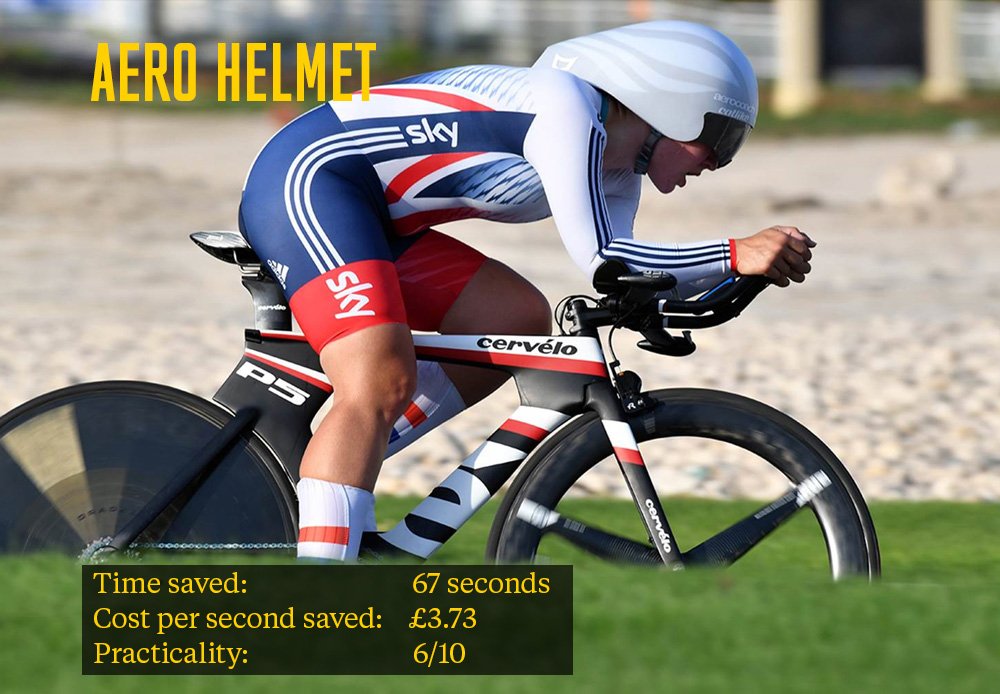
Access to a wind tunnel was once reserved for Formula 1 cars, the military and well-funded sports teams. Nowadays, any cyclist can pay and get their bike fitted correctly then adjusted in a wind tunnel for optimum aerodynamics. The concept of this is quite appealing, but the price tag is not. And unless you’re confident of holding a specific position for an extended period of time, any benefit could be lost. The principle is a good one though: make sure the bike is correctly fitted to you, positioning yourself in a way that offers as little frontal resistance as possible.
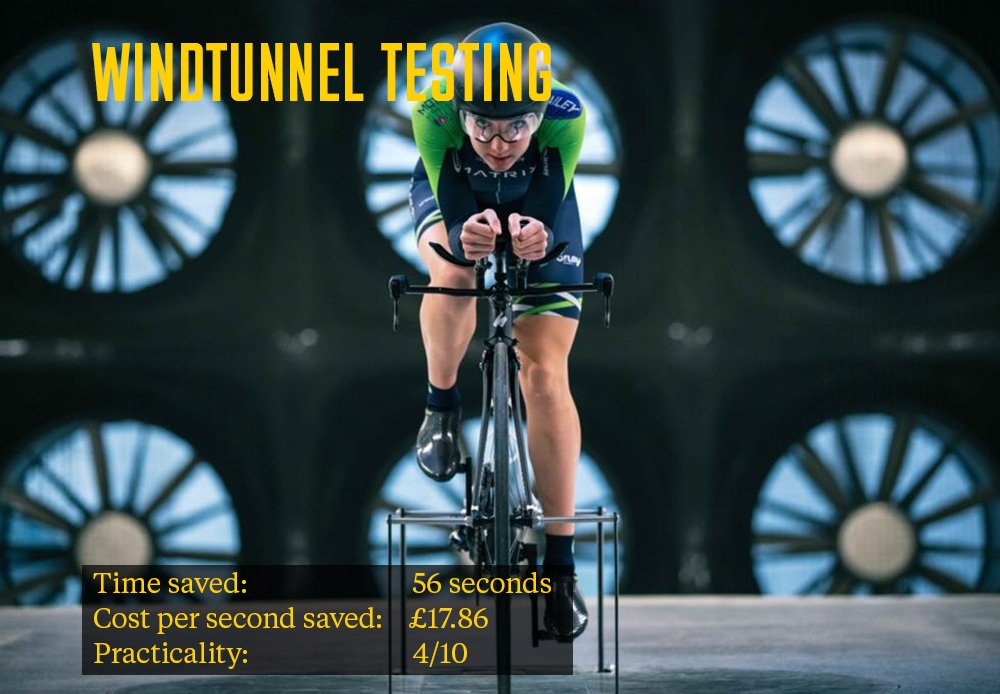
The wheelset is typically the first upgrade any cyclist makes to their off-the-shelf bike. And with good reason. Retailers and manufacturers will often include lower grade wheels in the package to bring the price down. After a year, the hubs have worn, you’ve noticed they’re quite heavy, the rolling resistance is getting worse and they aren’t that aero. You don’t have to spend thousands on better wheelset by any means. But if you’re looking for some TT gains, spokes, rims and hubs need to be taken into account.
For the purpose of this test, a 10 degree yaw was used. Yaw is where ‘meteorological’ wind combines with the wind you generate against yourself simply by cycling. The overall resistance is known as yaw. In simple terms, if you ride at 40kmph, with a cross-head wind of 10 mph hitting you at 45 degrees, the yaw is 8.5. (If you find this in anyway interesting, there is a great article here that goes into much more depth on the principles of yaw and its effects). This is why simpler spokes were chosen, as they’re less affected by cross winds.
Science aside, spending money on a fancy front wheel will save you a good amount of time. But they’re not cheap.
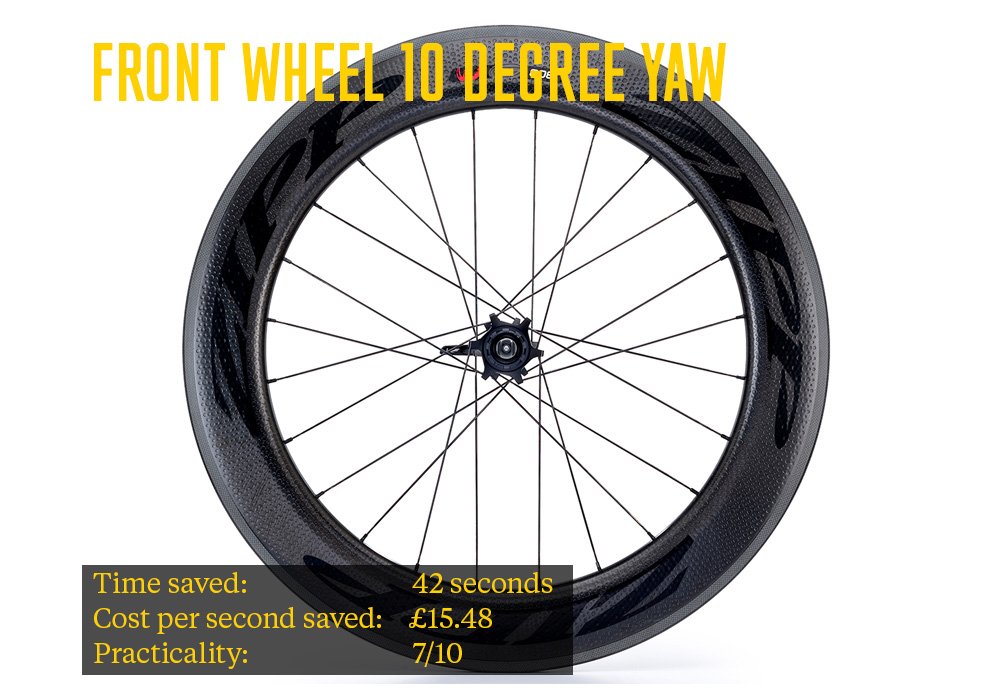
Whilst riding, your feet move the most of all of your body parts. So you might as well make them as smooth as possible. As it stands, they’re most likely covered with ridges, clips and laces. Good news readers: what can only be described as cycling marigolds can save you 30 seconds, keep you warm and even make you more visible to other road users. What’s not to like? Oh, did I mention they’re dirt cheap?!
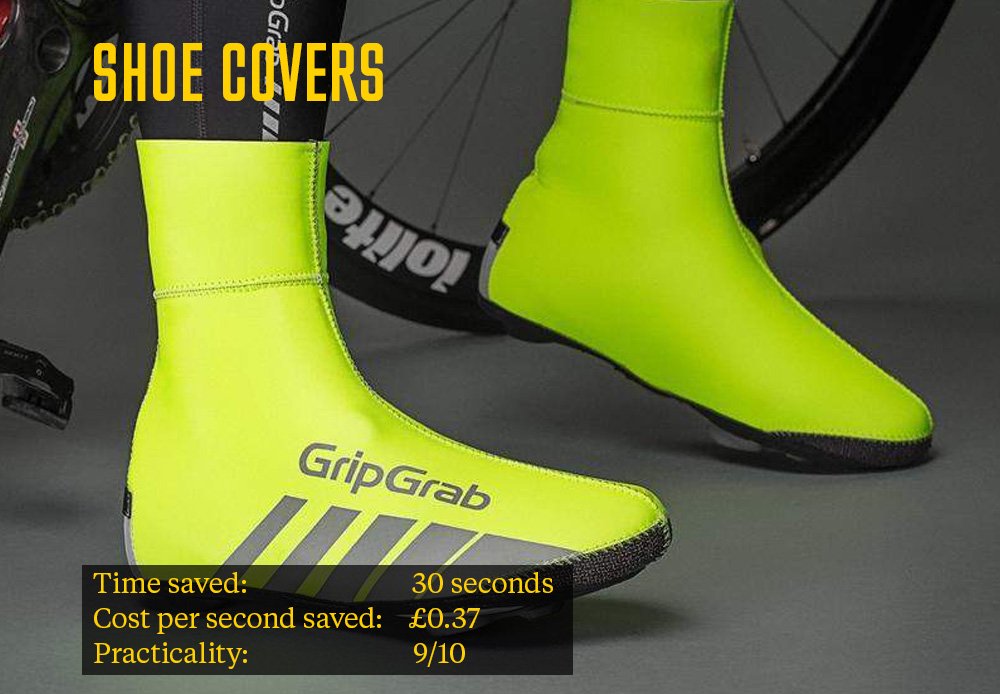
This tested wheels in a controlled environment: representing either a windless day or direct headwind (hence the 0 degrees yaw). Because of this, wider and fewer spokes were used as they wouldn’t be affected by cross winds. Clearly this must be taken with a pinch of salt. But it gives you an idea of what difference those fancy wheels on the bloke you saw the other day actually make. The answer, not much, other than a considerable hit on the bank balance and the risk of the inevitable quizzing from your partner: ‘how much?!’. ‘Don’t worry, they were on sale…’
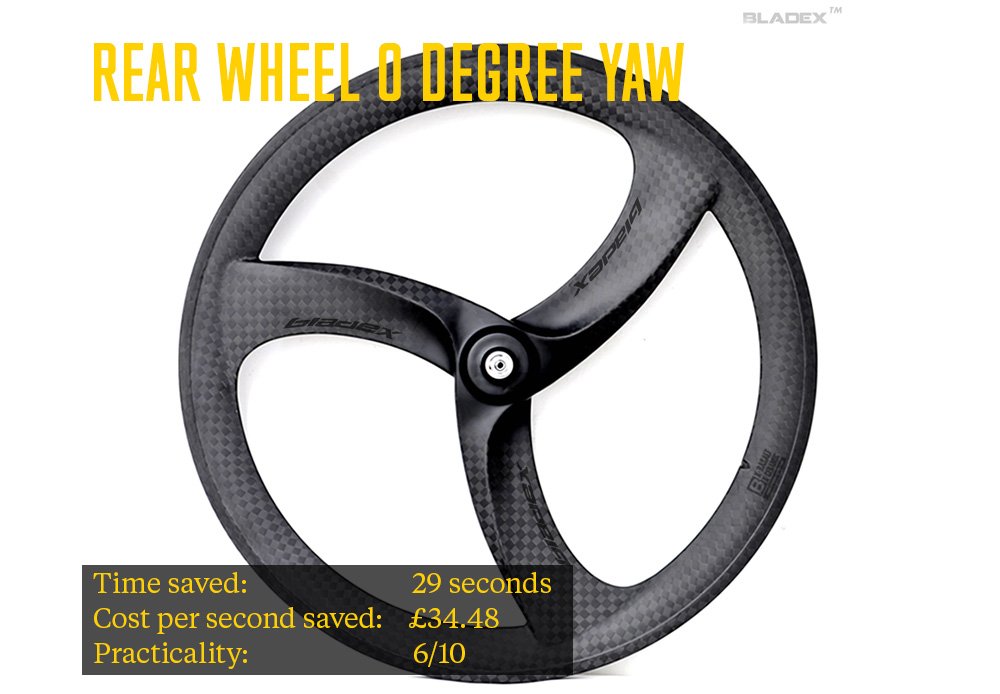
With no cross wind, why not remove a few spokes and get a solid carbon front wheel. Pros: they look great, and make a fun sound. Cons: they only really like smooth surfaces, cost a bomb and are a nightmare to repair. The choice is yours. You may have exhausted all options above and want the next upgrade to be form over function, in which case, fire away.
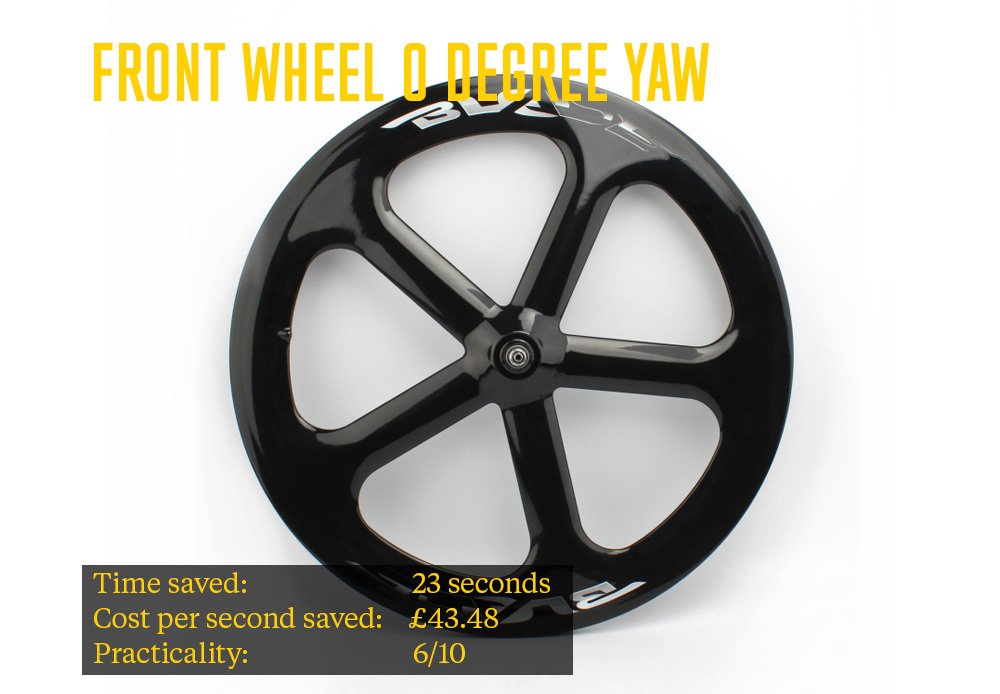
Last and by no means least, the coveted aero frame. Every other bike on the road these days seems to be aero in some degree or another. But none seem consistently quicker than your average road bike. This test seems to confirm that. They do look pretty jazzy, and often come with better components, but the aerodynamic benefit of a more angular frame appears minimal. As mentioned before, the technology in this department will have improved since this test was first carried out. Nonetheless, this option seems an expensive way to gain a few seconds.
Top 3
The outright winners here are the speed suit, clip on aerobars and shoe covers.
If you’re in need of speed, these should be your first port of call. But if money is no object there clearly are other gains to be had out there. Before splashing out on a new wheelset though, it might be worth double checking that power to weight!